A couple of weeks ago i found myself gaily walking through the former factory complex of Areal Böhler for the third edition of Art Düsseldorf.
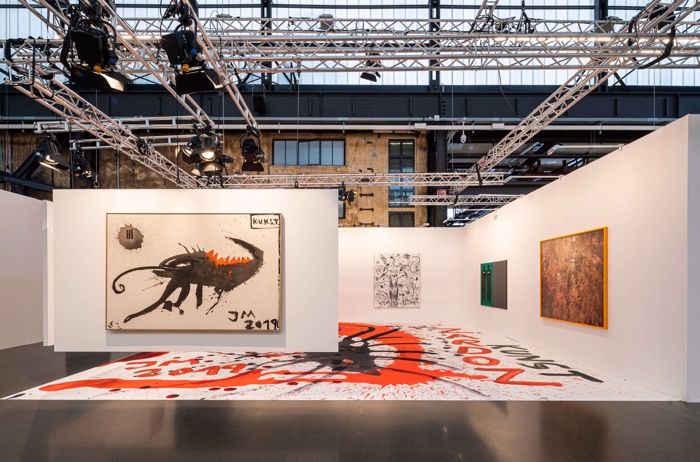
Art Düsseldorf 2019. Sies + Höke. Photo: Sebastian Drüen
Art Düsseldorf is not among the biggest art fairs. It is neither cosmopolitan nor experimental but it did present a few exciting galleries and artworks:
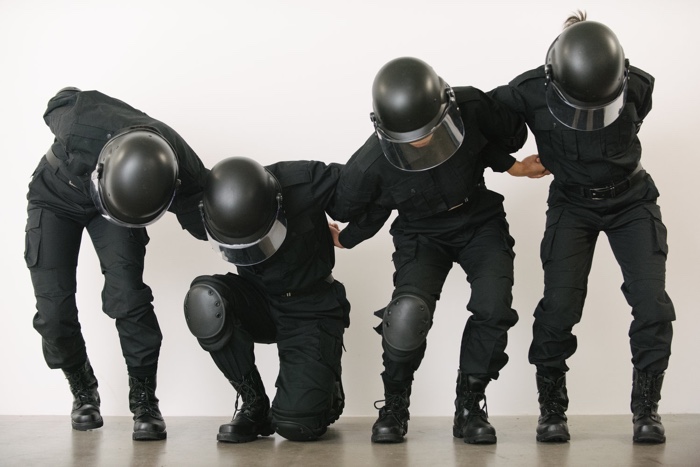
Isaac Chong Wai, Rehearsal of the Futures: Police Training Exercises, 2018
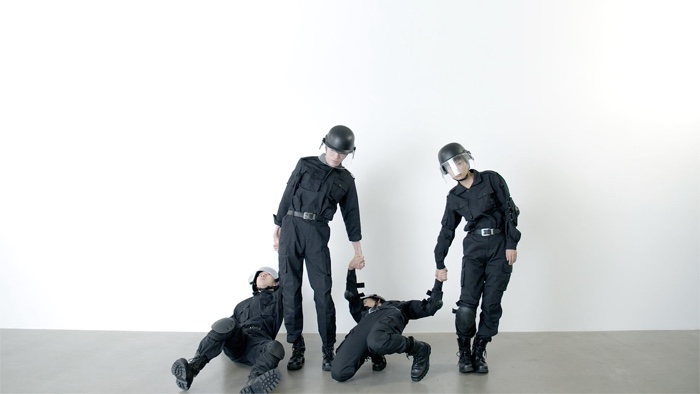
Isaac Chong Wai, Rehearsal of the Futures: Police Training Exercises, 2018
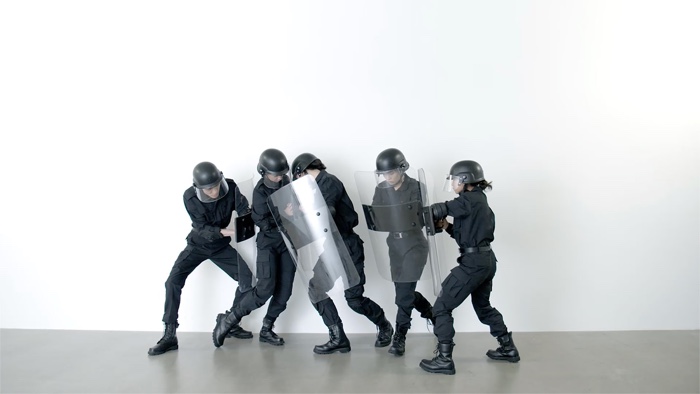
Isaac Chong Wai, Rehearsal of the Futures: Police Training Exercises, 2018
The most impressive work i saw at the fair was Isaac Chong Wai’s take on police training. The young artist spent hours going through videos and manuals of police academies from around the world. He was particularly interested the tactics, actions and gestures deployed in case of street protests. The result of his research is a performance and video titled Rehearsal of the Futures: Police Training Exercises.
Chong Wai choreographed dancers to recreate the typical agressive postures but slowed down until the moves get gentle, the bodies soft, the blow harmless and the confrontation almost comforting. The full frontal physical violence subsides but the work also suggests other forms of violence that are institutionalised and less visible.
The video invites the viewer to question the intended use of police anti-riot manoeuvres: “are they meant as a first line of defence or a last resort?”
The video is a recording of a performance that took place back in 2018 but, when watching these images, it is difficult not to think about recent police violence against protesters in France, Hong Kong and elsewhere in the world.
I’m not surprised the artist won the Blooom Award by Warsteiner 2019 at Art Düsseldorf.
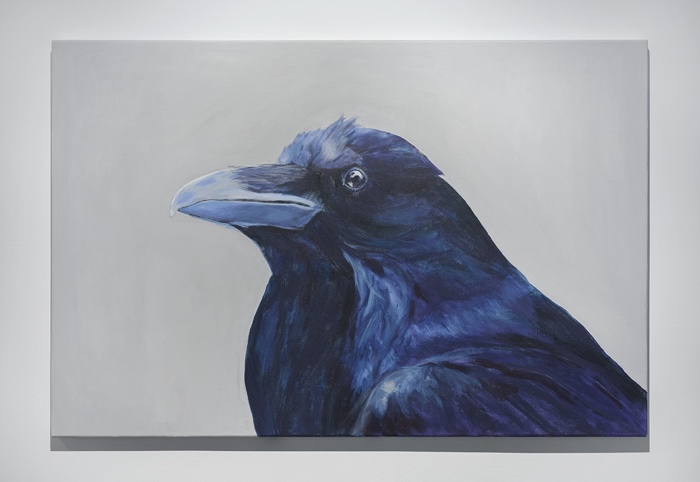
Elmas Deniz, Raven Portraits, 2018. Zilberman gallery. Photo credit: Ridvan Bayrakoglu
Our anthropocentrism prevents us from seeing animals as individuals different from each other. Elmas Deniz appropriated photos by Jana Mueller to paint portraits of members of the corvid family, highlighting their character and distinctiveness.
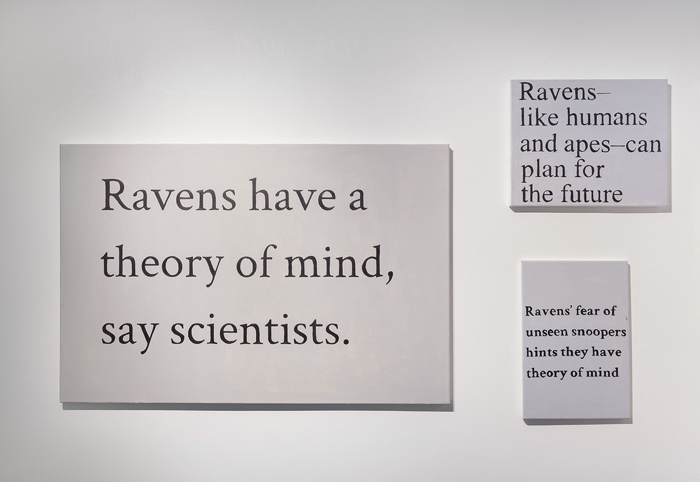
Elmas Deniz, Ravens have a Theory of Mind, Say Scientists, 2018. Zilberman gallery. Photo credit: Ridvan Bayrakoglu
The portraits are accompanied by Ravens have a Theory of Mind, Say Scientists, a collection of headlines from various magazines and newspapers that further demonstrates that humans are not as singularly exceptional as they think. The catchy headlines summed up a scientific research on the cognitive abilities of corvids. Experiments demonstrated that these birds routinely hide food to eat later if they believe rivals might steal their snacks. They are even able to select gifts for their partners based on what they thinks the latter will like.
Crows and jays have thus a theory of mind, an “ability to attribute mental states — beliefs, intents, desires, pretending, knowledge, etc. — to oneself and others and to understand that others have beliefs, desires, intentions, and perspectives that are different from one’s own.”
The series also alludes to our mediated experience of “nature”. We don’t have any immediate relation with other wild, living entities anymore. Everything we know about them is filtered through science which in turn, is mediated by the media channels that digest, edit and simplify scientific researches (and thus wildlife) for us.
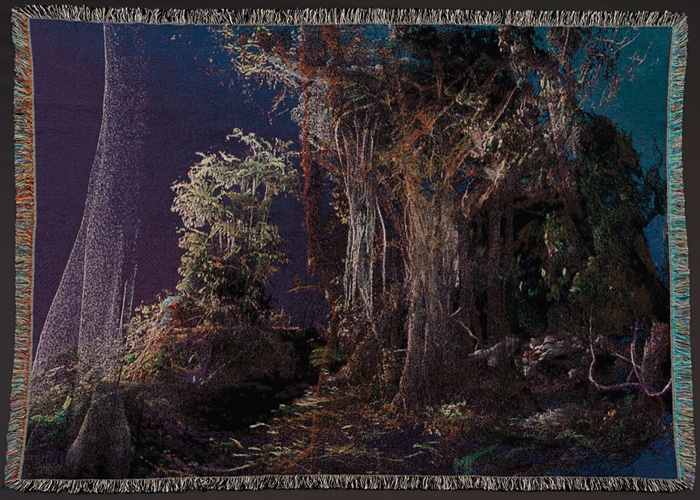
Simon Speiser, In a Young World of Resplendent Glitter, 2018
I discovered the work of Simon Speiser while attending the very interesting programme of talks curated by Ute Weingarten. The series of panels and discussions zoomed in on how the digital is shaping and unsettling the art world. That’s where i learnt that ten percent of all art sales are now handled online (usually following a first contact at fairs or galleries) and heard time and time again that contemporary art is one of the few spaces where most actors are still intent on resisting any digital influence for as long as possible.
Speiser was participating to a panel about new forms of collaboration in the art world. I was especially intrigued by a photo of one of the tapestries he showed during his intervention. The tapestry accompanies his “In a Young World of Resplendent Glitter“ VR work. The weaving of the textile work makes reference to Ada Lovelace, the visionary mathematician who saw the potential of computers beyond pure calculation and who published the first algorithm intended to be carried out by such machines. She found inspiration in the textile machinery that used punchcards to direct the weaving of patterns. This reference creates an arch from textile mechanisation to contemporary digital technology.
Wu Tsang, Wildness (trailer), 2012. Excerpt over here
Julia Stoscheck Collection, a private collection specialising in time-based art, presented a selection of works that explore current socio-cultural and sociopolitical issues.
There were four videos in the space the collection occupied at the fair. The one that kept me glued to the screen was Wildness, a film that traces the story of the nightclub Silver Platter, a safe space and entertainment venue to the Latinx transgender community in Los Angeles since the early 1960s. Silver Platter is also the bar film maker Wu Tsang and DJs NGUZUNGUZU & Total Freedom chose to host a weekly performance art party titled Wildness. The film tells both the history of the underground venue and its community and the disturbance that the arrival of the new group of young, queer artists of colour caused.
The interviews in Wildness are poignant and full of humour, the film combines fiction and documentary, poetry and activism. It talks about tolerance, immigration, invisibility and finding a sanctuary and a family during the night. I wish it were possible to see this film outside of art venues.
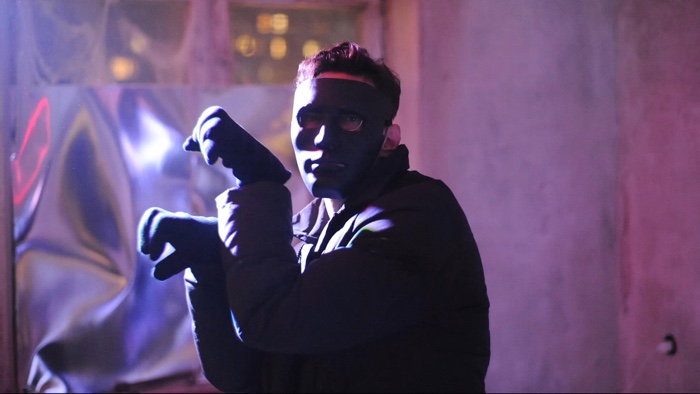
Tobias Zielony, Maskirovka, 2017
Maskirovka is a term used to designate Russian covert warfare and military deception. The word reemerges regularly, most recently in the context of the strategy adopted by Russia toward Ukraine since the Maidan uprising. Masks, however, also played an important role in protecting the Maidan protesters from tear gas and from identification by the authorities. In a stop-motion animation called Maskirovka (also presented by the Julia Stoscheck Collection), Tobias Zielony draws parallels between these strategies and the subversive methods of masking practised by young members of the LGBTQI and techno scene in Kiev.
More works and artists discovered at Art Düsseldorf:
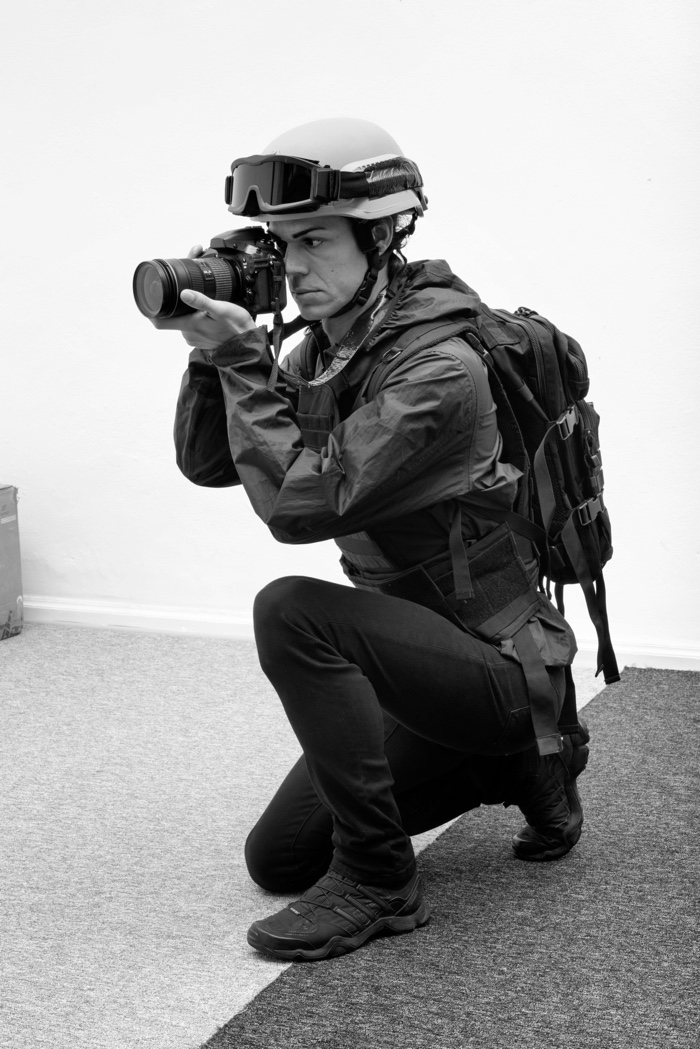
Andrzej Steinbach, Untitled (from the series Der Apparat), 2019. CONRADI, Hamburg
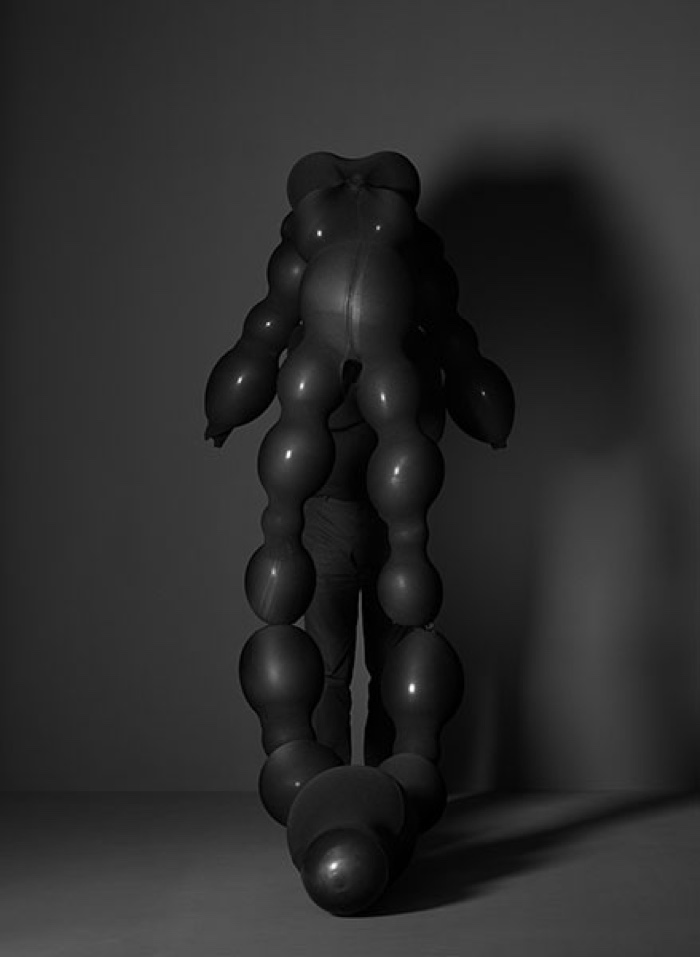
Jürgen Klauke, Bodysounds, 2017. Galerie Hans Mayer
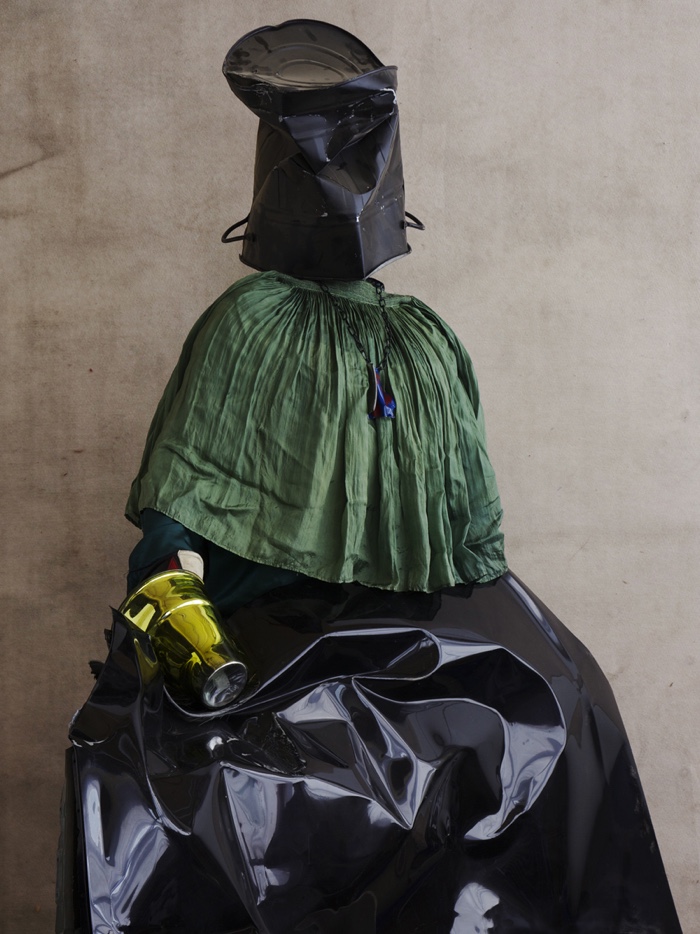
Thorsten Brinkmann, Misstallica, 2019. Pablo’s Birthday gallery
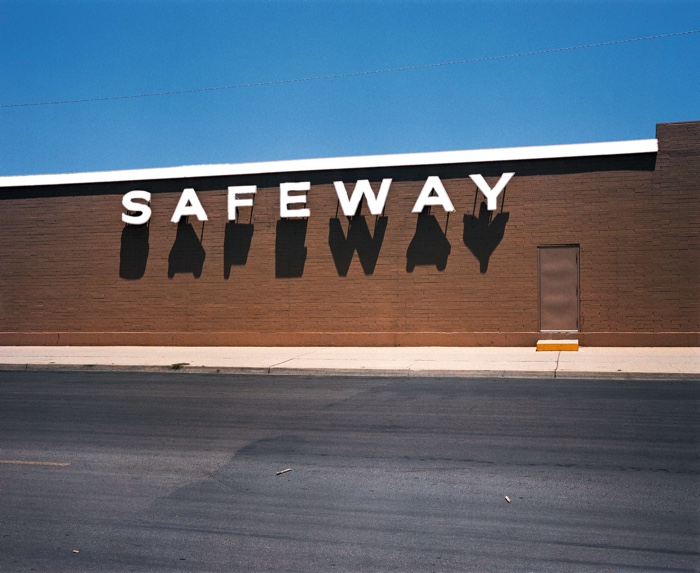
Wim Wenders, ‘Safeway’, Corpus Christi, Texas, 1983. Galerie Bastian, Berlin | London
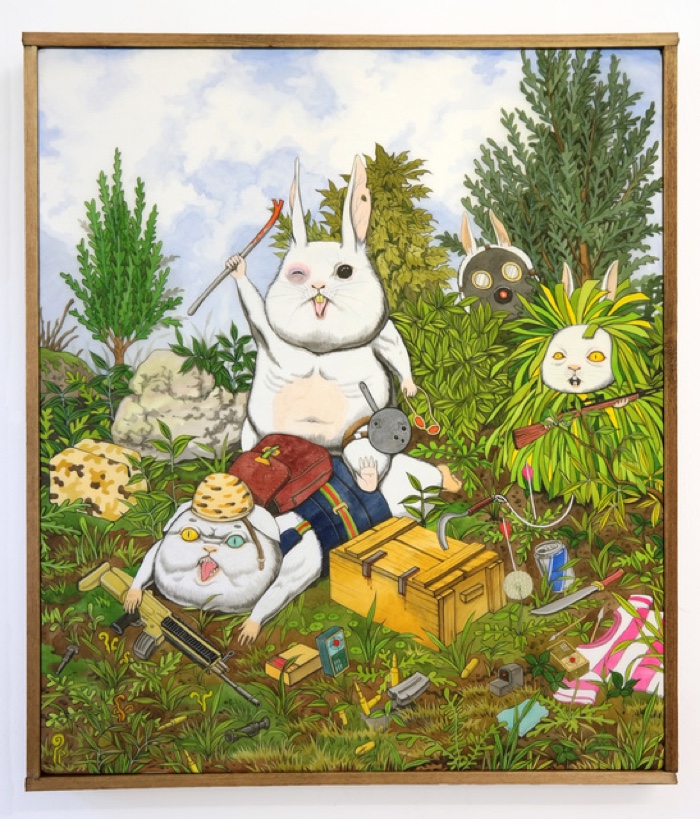
Hun Kyu Kim, Winner winner chicken dinner, 2018. CHOI&LAGER gallery
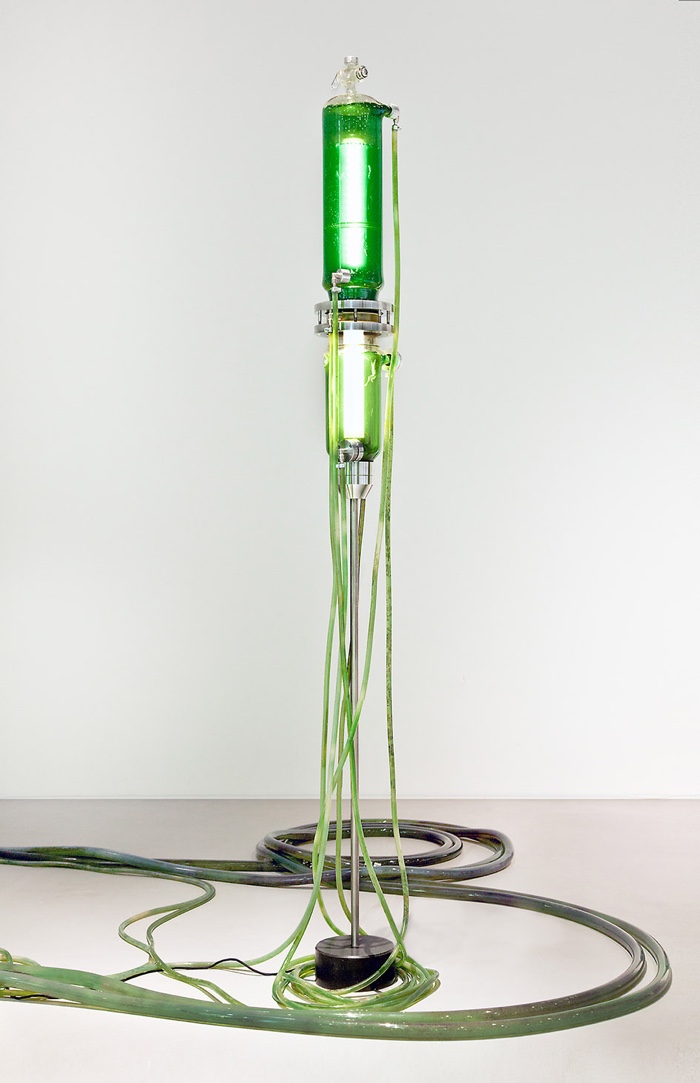
Thomas Feuerstein, IUTURNA, 2016. Courtesy the Artist and SEXAUER
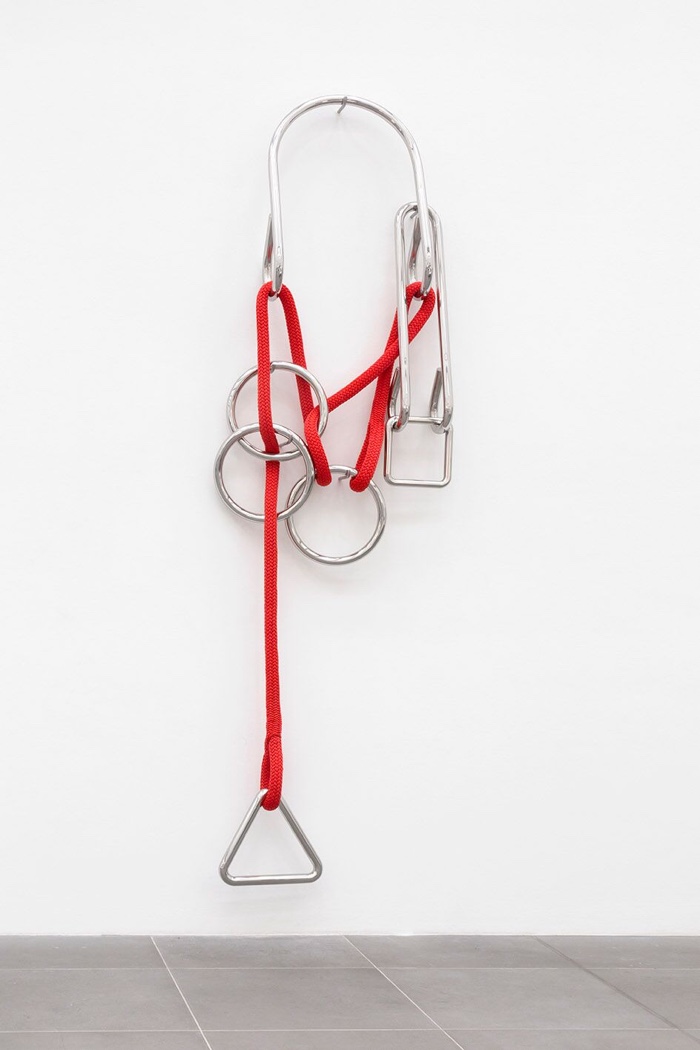
Eva Grubinger, Untitled (Problem No. 6), 2019. Galerie Tobias Naehring Leipzig/Berlin
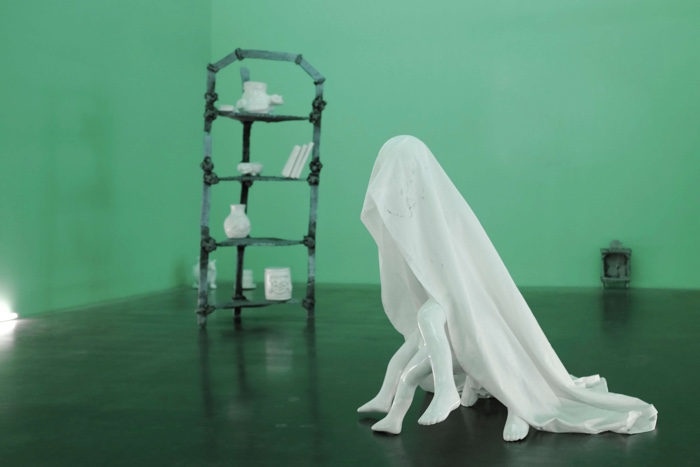
Naufus Ramirez-Figueroa, The House at Kawinal. Mendes Wood DM, Sies + Höke, Proyectos Ultravioleta
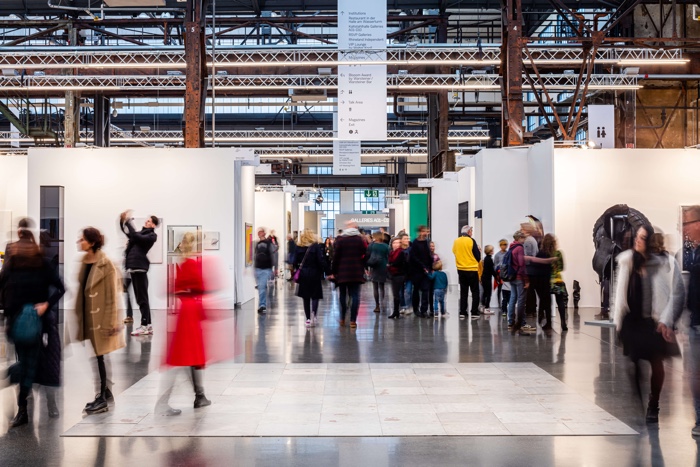
Art Düsseldorf 2019. Photo: Sebastian Drüen
